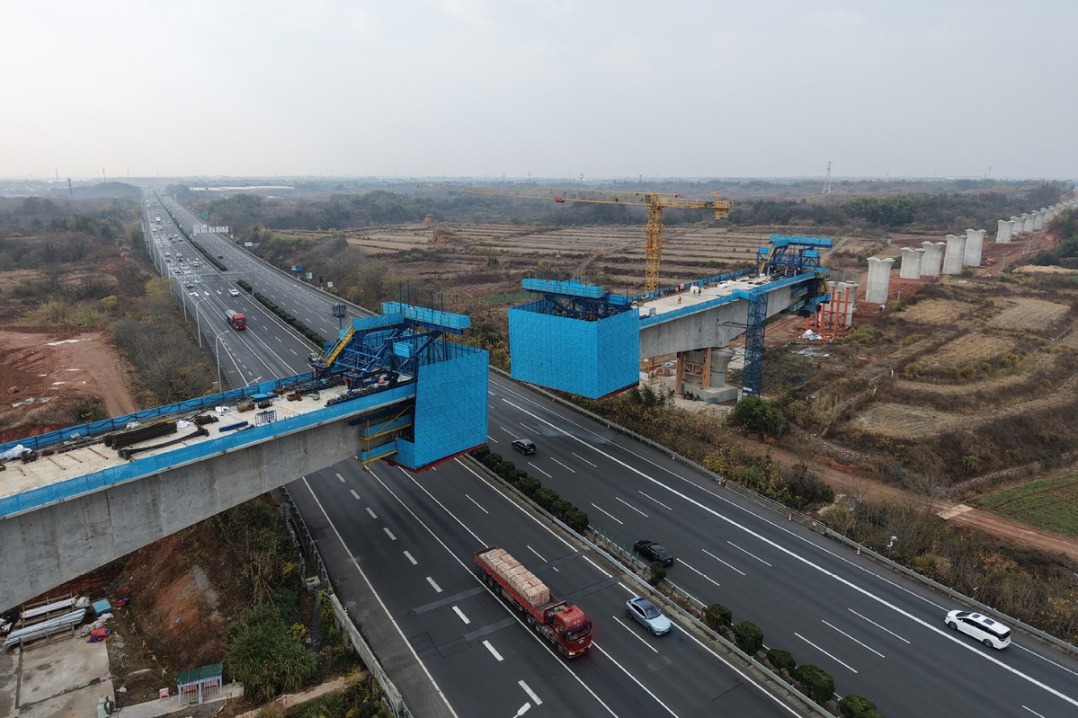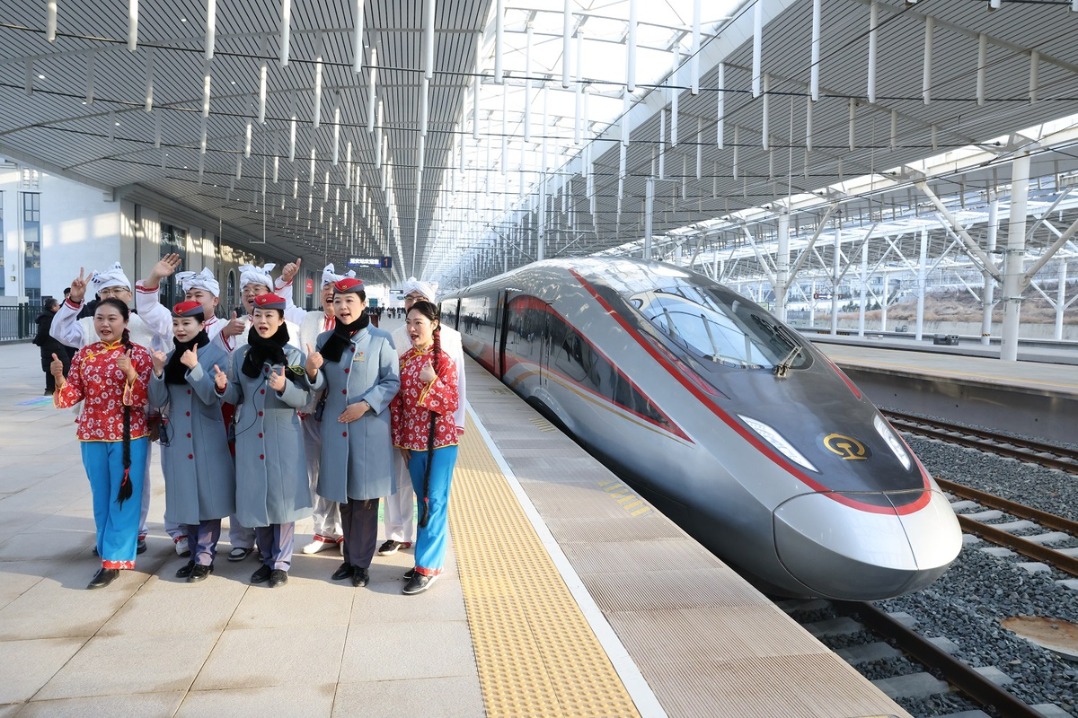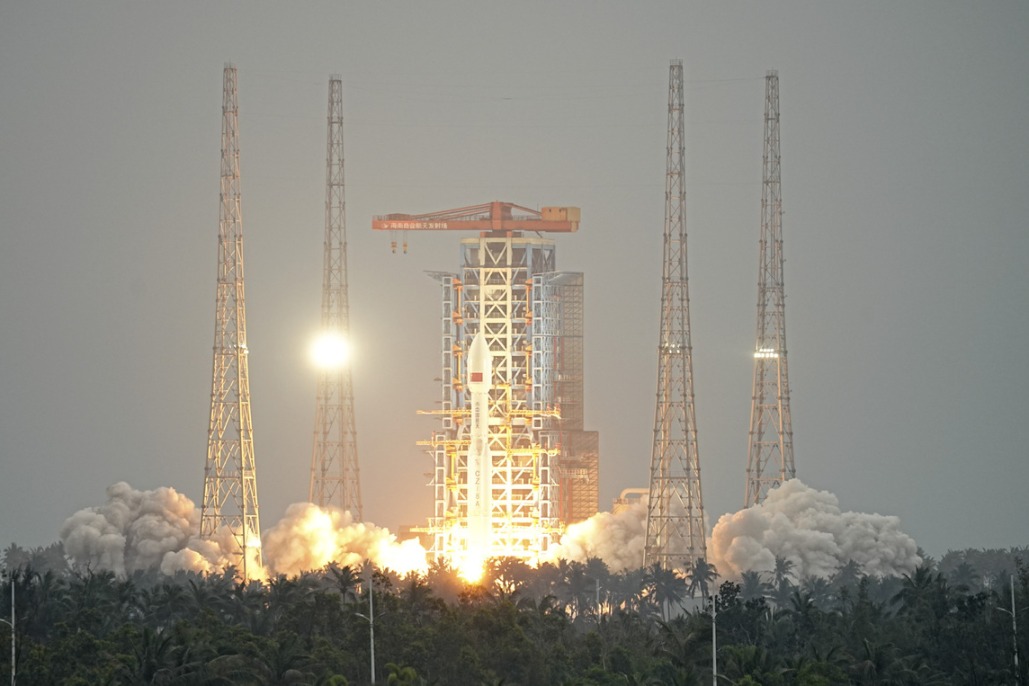Scientists' visit sparks inspiration
Young people from all places are welcome to join in aerospace research, expert says in HK


Hong Kong was the site of a deepspace extravaganza over the past week as six top national aerospace scientists paid a visit to the special administrative region bearing anecdotes about space exploration and soil samples collected from the moon.
Residents, students and young researchers in the city said they felt proud of China's achievements in space exploration and were inspired by the scientists' devotion and commitment in helping the country advance.
Six top Chinese aerospace scientists led a delegation for a five-day tour of Hong Kong on Tuesday to inspire young minds with personal tales about space exploration. Delivering talks in universities and secondary and elementary schools, they shared the work behind China's scientific and technological breakthroughs, from the recent Mars probe to the Beidou Navigation Satellite System.
The delegation included Qi Faren, the first chief designer of the Shenzhou spaceship; Long Lehao, chief designer of China's Long March Rockets series; Hu Hao, chief designer of the third stage of the nation's Lunar Exploration Project; Sun Zezhou, chief designer of Tianwen 1 Mars probe; Xie Jun, the deputy chief designer of the Beidou system and chief designer of Beidou's third-generation satellite; and Zhang He, executive director of the Chang'e 4 lunar probe project.

During their talks at Hong Kong Polytechnic University and the University of Hong Kong on Wednesday, Qi and Hu said China needs talent from throughout the nation, including Hong Kong, and such collaboration would offer a broader stage for young people to give play to their strengths.
"We need young people from all places and areas to join the research and programs of aerospace," Qi said, noting that several young scientists in the delegation graduated from universities in Hong Kong.
Hu expressed appreciation for PolyU's participation in China's space missions, especially the work of Yung Kai-leung, a professor and associate head of PolyU's Department of Industrial and Systems Engineering, who despite difficulties encountered in the Chang'e 5 lunar probe project, persevered and showed great responsibility, he said.
Over the past two decades, the university had been involved in many space missions, including the exploration of the moon and Mars.
After hearing Hu's lecture, Quentin Parker, director of HKU's Laboratory for Space Research, said China's achievements in space, including being the first to land on the far side of the moon, are exciting and have generated enormous public interest.
He added that technology developed in recent years has created abundant opportunities for China's space exploration and that he hopes HKU will become even more involved in these projects.
On the third day of their tour, the experts visited six Hong Kong schools.
Students seized the opportunity to get close to their idols and lined up to shake hands with the engineers and spacecraft designers, demanded autographs, took group photos and presented them with gifts such as self-designed posters and paintings.
A student surnamed Lam from Ling To Catholic Primary School in Kowloon, said that getting to meet Zhang He, executive director of the Chang'e 4 lunar probe project at a lecture she gave was thrilling. She had practiced her Mandarin for several nights in hopes of getting to ask Zhang some questions during the encounter.
Lam got what she wished for-answers and encouragement from Zhang, plus her autograph, which Lam said she would greatly treasure. She added that she can't wait to share what she heard with her classmates on Monday.
The Hong Kong Special Administrative Region's top leader took a question from China Daily at a Friday news conference. Chief Executive Carrie Lam Cheng Yuet-ngor said the visit of leading national scientists can help fire up dreams of scientific achievement among the city's youngsters.
On Saturday, the experts wrapped their visit to the city by attending the opening ceremony of an exhibition on Chinese scientists' achievements over the past 100 years, including some lunar soil brought back to Earth by the Chang'e 5 spacecraft in December 2020.
The free exhibition opened to the public on Sunday and will run until July 9.
- Beijing community leads the way in grassroots governance
- HKSAR govt extends thanks to various units for supporting people affected by residential complex fire
- Influencers barred from vulgar, false, or harmful content
- Hangzhou–Quzhou High-Speed Railway begins operations
- China records rise in survival prospects for child and adolescent cancer patients
- Ministry unveils draft revision of the national air quality standards





































